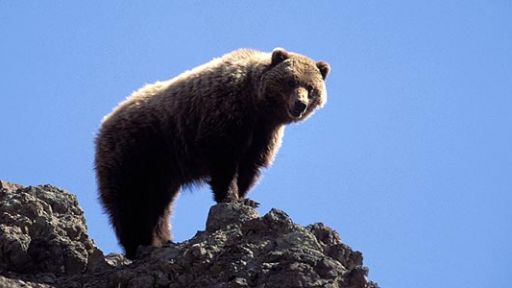Grizzly bear: the grizzly bear is a subspecies of brown bear that inhabits western Canada and the northwestern United States.
AKA: Grizzlies or North American brown bear
Class: Mammalia
Order: Carnivora
Family: Ursidae
Genus: Ursus
Species: U. arctos
Subspecies: U. a. horriblis
Grizzlies are a subspecies of the brown bear (Ursus arctos). In the United States, bears found inland are typically referred to as grizzlies, while those on the coasts are referred to as brown bears. In comparison to the brown bear, the main differences of the grizzly are its physical appearance and diet. Because grizzly bears are found inland, they mainly forage for plants, as well as small rodents, insects and fish. Meanwhile, coastal brown bears have a fatty, salmon-rich diet, which is why those found along the Alaska Peninsula are some of the largest in the world.
It has also been suggested that there are temperamental differences. Inland grizzlies seem to react more aggressively to others due to the competition for food.
The grizzly bear takes its name from the ‘grizzled’ blonde-tipped fur that grows along its shoulders and back.

What to do if you encounter a bear
Before visiting Yellowstone National Park or “bear country” familiarize yourself with safety precautions in order to avoid bear encounters. “Run for your life” may seem like common sense if a grizzly approaches you, but such action is highly unlikely to foil an attack. The recommended steps are not easy to follow, but they offer the best chance for survival.
Here’s what the experts say:
- If you encounter a grizzly, do not run.
- Avoid direct eye contact.
- Walk away slowly, if the bear is not approaching.
- If the bear charges, stand your ground (you cannot outrun it).
- Don’t scream or yell. Speak in a soft monotone voice and wave your arms to let the animal know you are human.
- If you have pepper spray, prepare to use it.
- If the grizzly charges to within 25 feet of where you’re standing, use the spray.
- If the animal makes contact, curl up into a ball on your side, or lie flat on your stomach.
- Try not to panic; remain as quiet as possible until the attack ends.
- While in bear country, be aware that you may encounter a bear at any time.
- Be sure the bear has left the area before getting up to seek help.
Additional facts about grizzlies:
- Most human injuries from grizzly bears are caused by females acting aggressively to protect their young.
- Grizzlies are omnivores; they will eat almost anything. Although a large part of their diet is vegetation, grizzlies will also kill and eat large and small animals.
- Fewer than 1,100 grizzlies exist in the lower 48 states, in 5 populations in Wyoming, Montana, Idaho, and Washington. An estimated 500 to 600 grizzlies populate the Greater Yellowstone area.
- Grizzlies are North America’s slowest reproducing land mammal. A female may not have her first litter until she is 5 or 6 years old, after which she will then typically produce two cubs every 2.5 years. Cubs from the same litter can be from different fathers. Grizzlies have a natural life span of 30 years or more.













